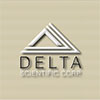
New High Center of Gravity Bollards Stop Tall Trucks Dead in their Paths
 Delta Scientific, a manufacturer of counter-terrorist vehicle control systems used in the United States and internationally, today announced that taller trucks, especially those found in Europe and the Middle East, will not be able to tumble over anti-terrorist, crash-proof bollards. In a full scale crash test, the new Delta Scientific DSC720 1M bollards, that raise and lower in seconds, passed an independent lab test following ASTM test criteria for an M50 level test. Tested as a set of three bollards and designed to control a 12-foot (3.7 M) lane, the new DSC720 1M bollards stopped a 15,000 pound (66.7 Km) flatbed truck impacting at 50 miles per hour (80 kph), with zero penetration of the vehicle.
Delta Scientific, a manufacturer of counter-terrorist vehicle control systems used in the United States and internationally, today announced that taller trucks, especially those found in Europe and the Middle East, will not be able to tumble over anti-terrorist, crash-proof bollards. In a full scale crash test, the new Delta Scientific DSC720 1M bollards, that raise and lower in seconds, passed an independent lab test following ASTM test criteria for an M50 level test. Tested as a set of three bollards and designed to control a 12-foot (3.7 M) lane, the new DSC720 1M bollards stopped a 15,000 pound (66.7 Km) flatbed truck impacting at 50 miles per hour (80 kph), with zero penetration of the vehicle.
“Security professionals that have been concerned that truck bombers using very tall trucks could vault over standard bollards of 35 inches (89 cm) no longer need worry,” emphasized David Dickinson, Delta Scientific senior vice president. “These taller bollards provide the same type of stopping power as their predecessor, the DSC720, which is installed throughout the world.”
DSC720 bollards are deployed at U.S. locales, including Federal buildings and Department of Defense installations, as well as at various nations’ embassies and high-profile, high-risk facilities, such as Buckingham Palace and the Singapore Parliament.
The new bollards feature a variety of power options including Delta’s hydraulic power unit (HPU), all-weather pneumatic, electro-mechanical, manual or fixed post. The DSC720 1M’s controls feature touch screen panels, data logging and Cat 5 cable connections with options of control via a closed network, the Internet, fiber optic or remote operation. Decorative castings and brushed stainless steel sleeves are standard options.